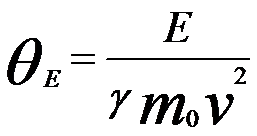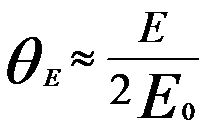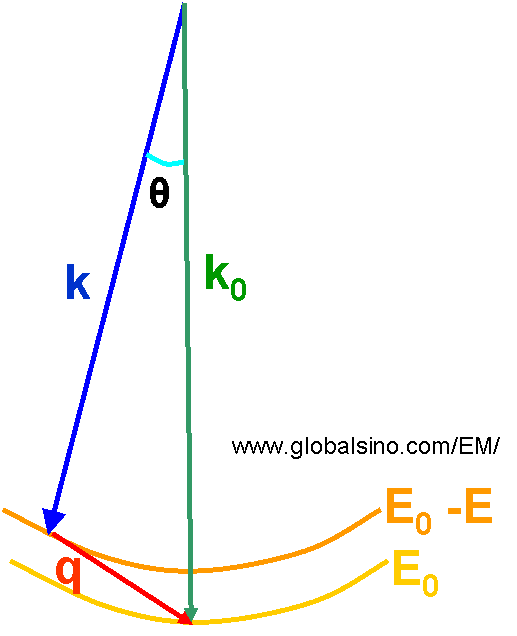=================================================================================
In the case of an incident electron beam irradiates a specimen in TEM, the beam can be described by a plane wave. Figure 3799 shows the schematic illustration of momentum transfer and scattering angle of the incident electron beam in an atomic ionization process. Before the interaction of the incident beam with the specimen, the beam has a wave vector k0 (=2π/λ0) and an energy E0. This beam is scattered through an angle θ and loses energy E due to the ionization process. After the interaction it has a wave vector k and a smaller energy E' (=E0 - E). The momentum transferred to the specimen is q (=k0 - k). Their relationship is given by,
 ------------------------------- [3799a] ------------------------------- [3799a]
where,
θE -- The characteristic scattering angle (or called most probable scattering angle) for the given energy loss E.
θE is given by
 (For general expression) ------------------- [3799b] (For general expression) ------------------- [3799b]
 (For an energy of incident electrons is less than 100 keV) ------------------- [3799c] (For an energy of incident electrons is less than 100 keV) ------------------- [3799c]
Where,
γ -- The relativistic factor (=(1 - v2/c2)-1/2)
m0 -- The rest mass of the electron
v -- The velocity of the incident electron

Figure 3799. Schematic illustration of momentum transfer and scattering angle of the incident
electron beam in an atomic ionization process.
|
 (For general expression) ------------------- [3799b]
(For general expression) ------------------- [3799b]  (For an energy of incident electrons is less than 100 keV) ------------------- [3799c]
(For an energy of incident electrons is less than 100 keV) ------------------- [3799c] 